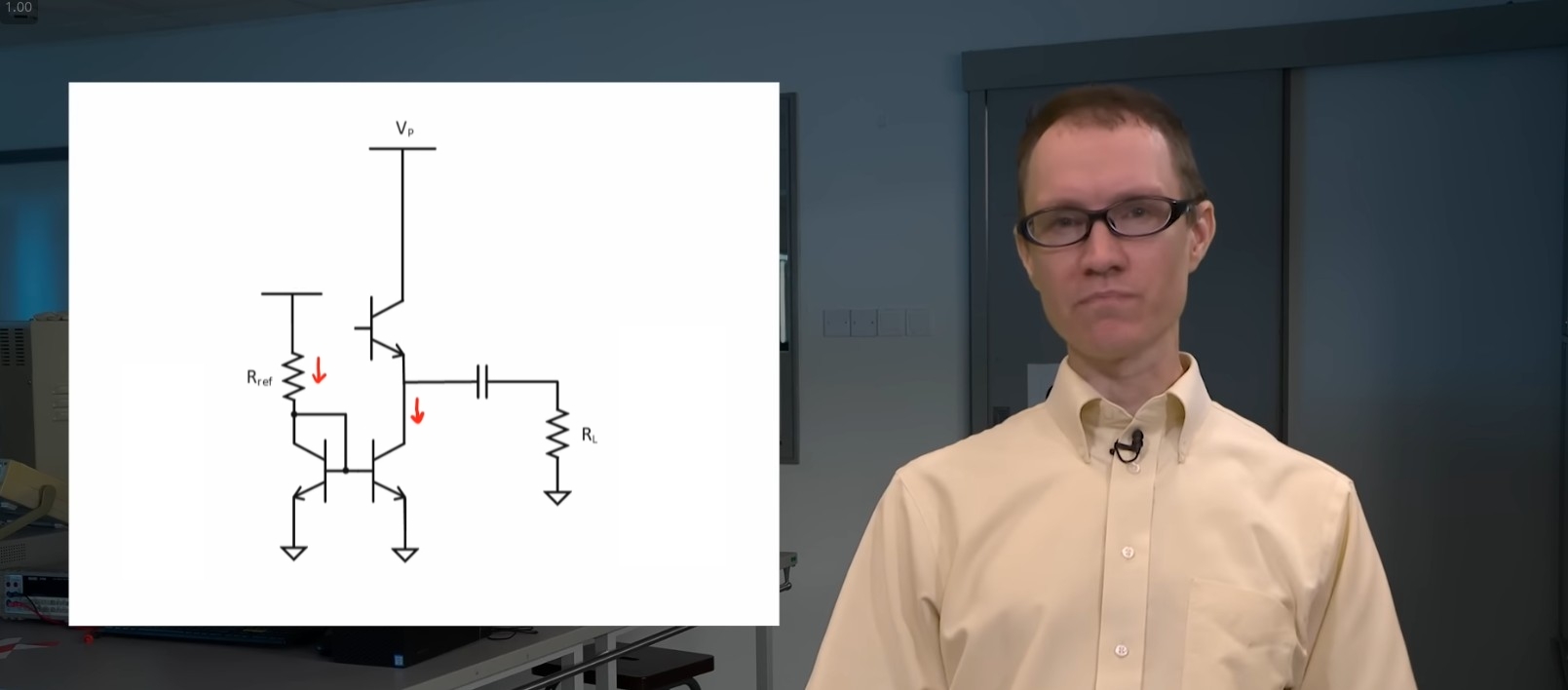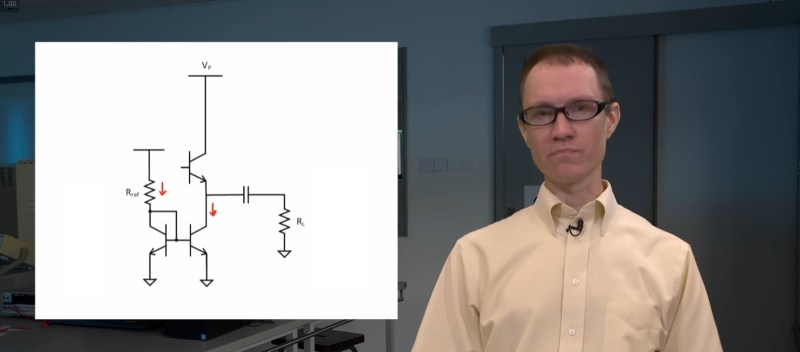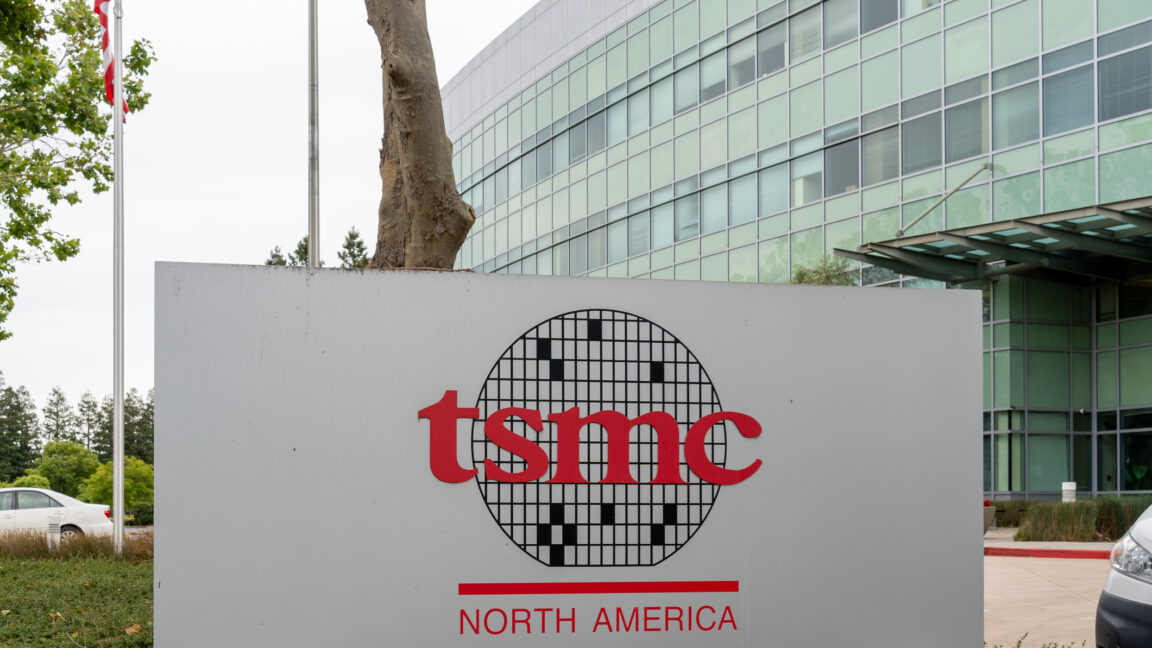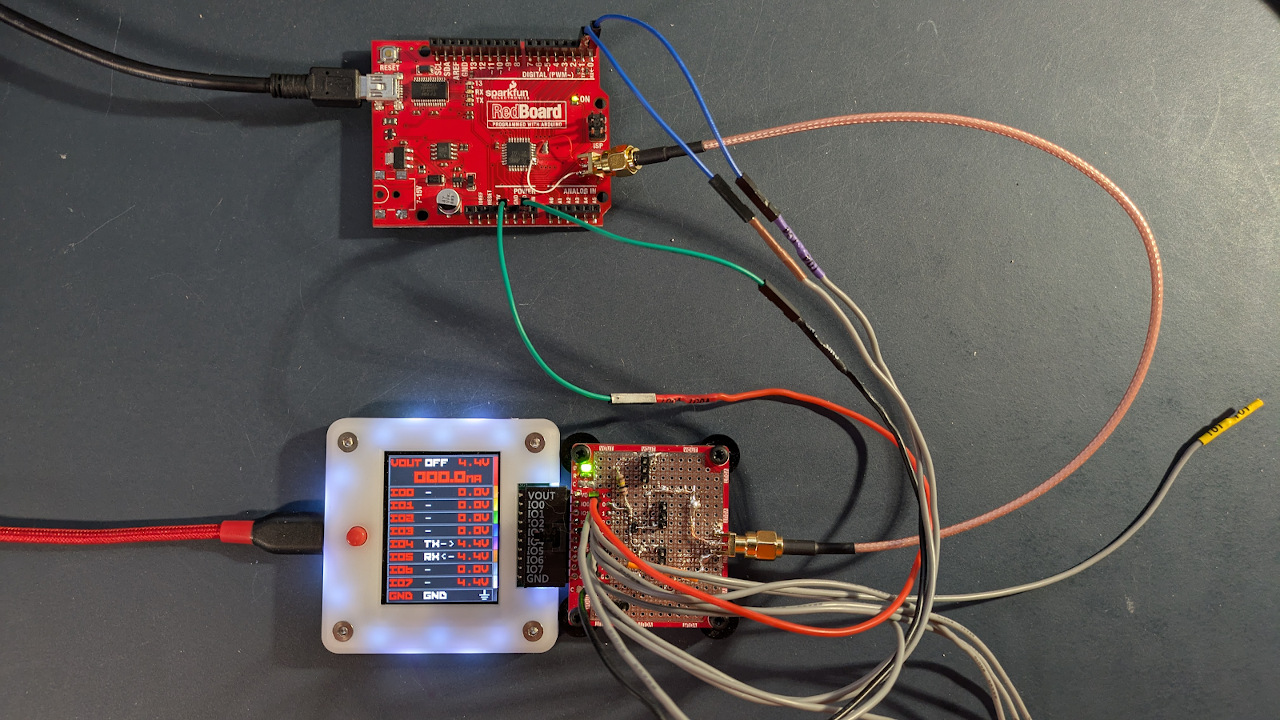Biasing Transistors with Current Sources
Over on his YouTube channel [Aaron Danner] explains biasing transistors with current sources in the 29th video of his Transistors Series. In this video, he shows how to replace a …read more


Over on his YouTube channel [Aaron Danner] explains biasing transistors with current sources in the 29th video of his Transistors Series. In this video, he shows how to replace a bias resistor (and consequently an additional capacitor) with a current source for both common-emitter and common-collector amplifiers.
A current source provides electrical energy with a constant current. The implication is that if the resistance of the load changes the current source will vary the voltage to compensate. In reality, this is exactly what you want. The usual resistor biasing arrangement just simulates this over a narrow voltage range, which is generally good enough, but not as good as a true current source.
As [Aaron] explains there are various advantages to biasing transistors with current sources instead of resistors, chief among them is that it allows you to get rid of a capacitor (capacitors are expensive to make in integrated circuits and often among the lowest-quality components in a design). You can also avoid losing some of your gain through the bias resistor.
The current source that [Aaron] uses in this video is known as a current mirror.










































![Mobile Legends: Bang Bang [MLBB] Free Redeem Codes April 2025](https://www.talkandroid.com/wp-content/uploads/2024/07/Screenshot_20240704-093036_Mobile-Legends-Bang-Bang.jpg)
























![Apple Releases iOS 18.5 Beta 3 and iPadOS 18.5 Beta 3 [Download]](https://www.iclarified.com/images/news/97076/97076/97076-640.jpg)
![Apple Seeds visionOS 2.5 Beta 3 to Developers [Download]](https://www.iclarified.com/images/news/97077/97077/97077-640.jpg)
![Apple Seeds tvOS 18.5 Beta 3 to Developers [Download]](https://www.iclarified.com/images/news/97078/97078/97078-640.jpg)
![Apple Seeds watchOS 11.5 Beta 3 to Developers [Download]](https://www.iclarified.com/images/news/97079/97079/97079-640.jpg)













![Lenovo shows off its next 8.8-inch Legion Tab with vague AI promises [Gallery]](https://i0.wp.com/9to5google.com/wp-content/uploads/sites/4/2025/04/lenovo-legion-tab-y700-2025-1.jpg?resize=1200%2C628&quality=82&strip=all&ssl=1)






























































































_Tanapong_Sungkaew_via_Alamy.jpg?width=1280&auto=webp&quality=80&disable=upscale#)




















































































![[The AI Show Episode 144]: ChatGPT’s New Memory, Shopify CEO’s Leaked “AI First” Memo, Google Cloud Next Releases, o3 and o4-mini Coming Soon & Llama 4’s Rocky Launch](https://www.marketingaiinstitute.com/hubfs/ep%20144%20cover.png)























































































































![BPMN-procesmodellering [closed]](https://i.sstatic.net/l7l8q49F.png)
















![From fast food worker to cybersecurity engineer with Tae'lur Alexis [Podcast #169]](https://cdn.hashnode.com/res/hashnode/image/upload/v1745242807605/8a6cf71c-144f-4c91-9532-62d7c92c0f65.png?#)




































































































